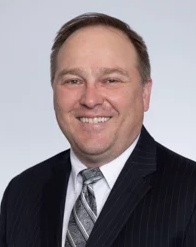
State: Calif.
Kamin: WCIRB Says Carriers Losing Money Due to Rising Costs: [2025-07-21]
Rising workers’ compensation costs across the board have led the Workers’ Compensation Insurance Rating Bureau of California to forecast its highest combined ratio in years, which means insurance carriers are losing money at an unusually high rate.

John P. Kamin
A quick look at the WCIRB Quarterly Experience Report shows that medical, indemnity and frictional costs are up across the board. Our friends at WorkCompCentral.com wrote a detailed summary of the report and pointed out that:
- The combined ratio is at its highest in 14 years, at 123%.
- Indemnity claim frequency has increased.
- Total claim costs are 6% higher than in 2023.
- Indemnity claims severity is at its highest in a decade.
- Medical severity has increased each year since 2016.
- Allocated loss adjustment expenses, commonly known as litigation costs, are up about 10% from 2023 to 2024.
- Medical cost containment increased due to higher medical costs.
To put it more simply, you don’t have to understand every term mentioned here. All you have to do is click on the WCIRB report, scroll down to the graphs and look at how almost every single graph is at its highest point on the right (which is the year of 2024).
Combine that with a nationwide study from the Workers Compensation Research Institute that attorney representation boosts claims valuation, and one quickly gets to the conclusion that it is more expensive to write workers’ compensation coverage than just about ever before.
Reform
As Bradford and Barthel equity partner Kimberly Wagner noted on a recent episode of the Comp Corner podcast, workers’ compensation reform bills used to be on a cycle of every eight-10 years. She cited the reforms in 1997, 2005, 2013 and our current state of being well overdue for a new reform bill.
Some of the areas that are ripe for reform are:
- Interpreter costs.
- The niche industry of petition for non-IBR costs.
- The relatively low bar for applicants’ attorneys to get additional panels in other specialties, even when there is no medical evidence of treatment for these other specialties.
- Legal doctrines that work as an end-around on the utilization review process and actively punish carriers for acting in good faith.
Fortunately, there are solutions to these types of problems:
- The Department of Industrial Relations could set an interpreter fee schedule (this was required by prior legislation).
- New statutes and/or regulations could provide time limits and other requirements to decrease the number of petitions for non-IBR.
- Workers’ compensation could benefit from having a statute akin to California Code of Civil Procedure Section 998. For example, if an applicant insists on going to a QME in an additional specialty, and the QME finds no PD for that specialty, then applicant would be liable for the cost of the QME’s bills.
- Statutory amendments that eliminate most exceptions to the UR/IMR system.
Solutions like this need to be studied and vetted to prevent additional gamesmanship, but something is necessary. Something is better than nothing.
If no changes are made, we could see a return to the workers’ compensation crisis from the early 2000s, which played a part in then-Gov. Gray Davis’ recall election, which he ultimately lost to Gov. Arnold Schwarzenegger. (For those who are too young to remember those days, employer premiums skyrocketed as carriers were going out of business. This led to the reform bill of SB 899 in 2005.)
Time is running out for reform under the current administration of Gov. Gavin Newsom. Due to term limits, Newsom’s last full year as governor will be 2026, as he will have served two four-year terms by then.
With no reform bill on the horizon, it’s safe to presume that costs will continue to rise in 2025, as there’s no evidence that the trends identified by the WCIRB will suddenly reverse. This leaves 2026 as Newsom’s last chance to do something about workers’ compensation reform.
It’s no secret that our governor has his eyes on the White House, and it’s even more evident by his frequent forays and disagreements with the current occupant of the 1600 Pennsylvania Ave. in Washington, D.C. Passing beneficial workers’ compensation reforms that reduce severity and frequency could give Newsom some pro-business accolades to brag about as he enters a primary on the national stage.
It’s been far more than eight years. Employers and carriers are most certainly due for reforms.
John P. Kamin is a workers’ compensation defense attorney and partner at Bradford & Barthel’s Woodland Hills location. He is WorkCompCentral's former legal editor. This entry from Bradford & Barthel's blog appears with permission.